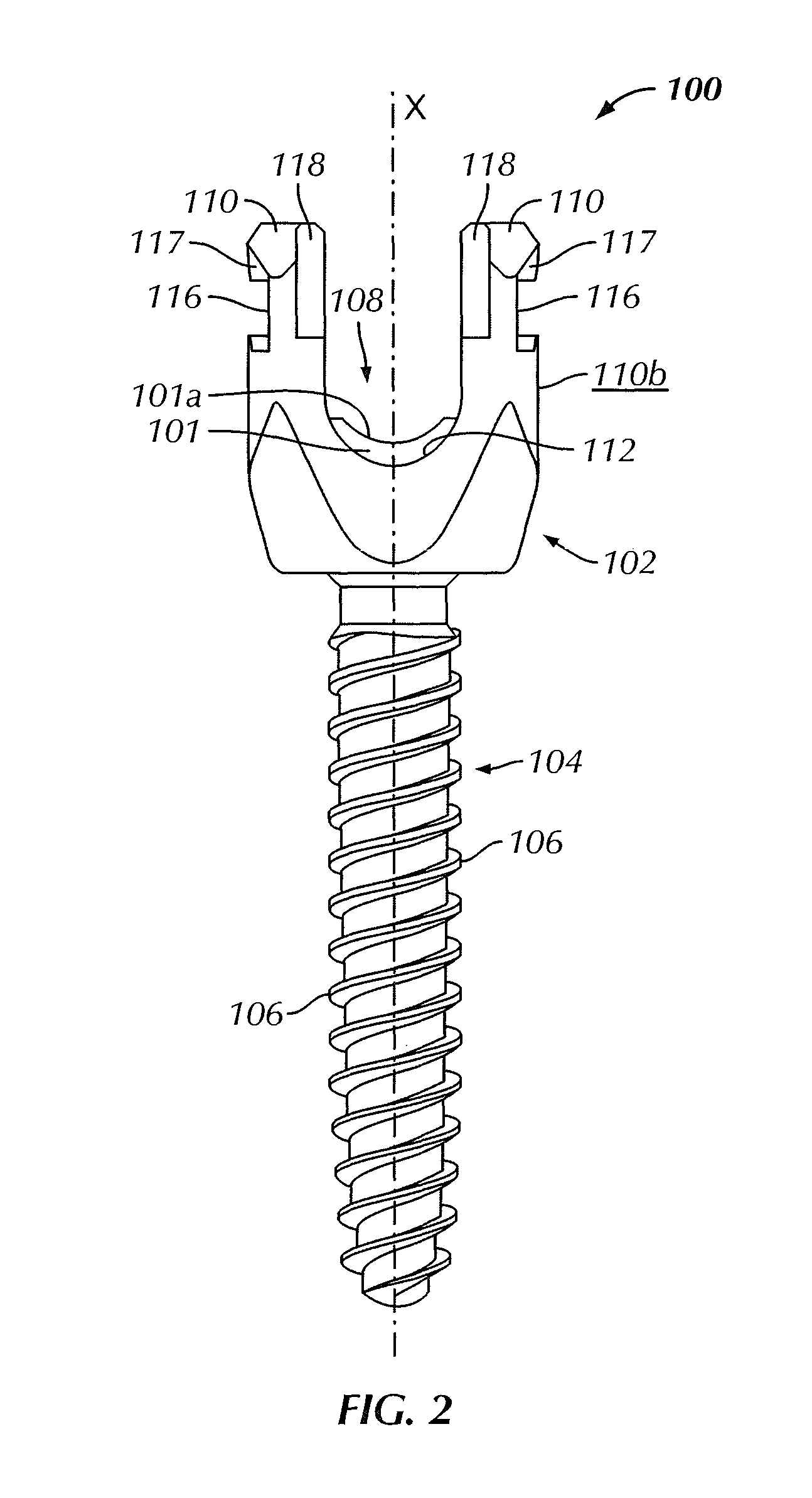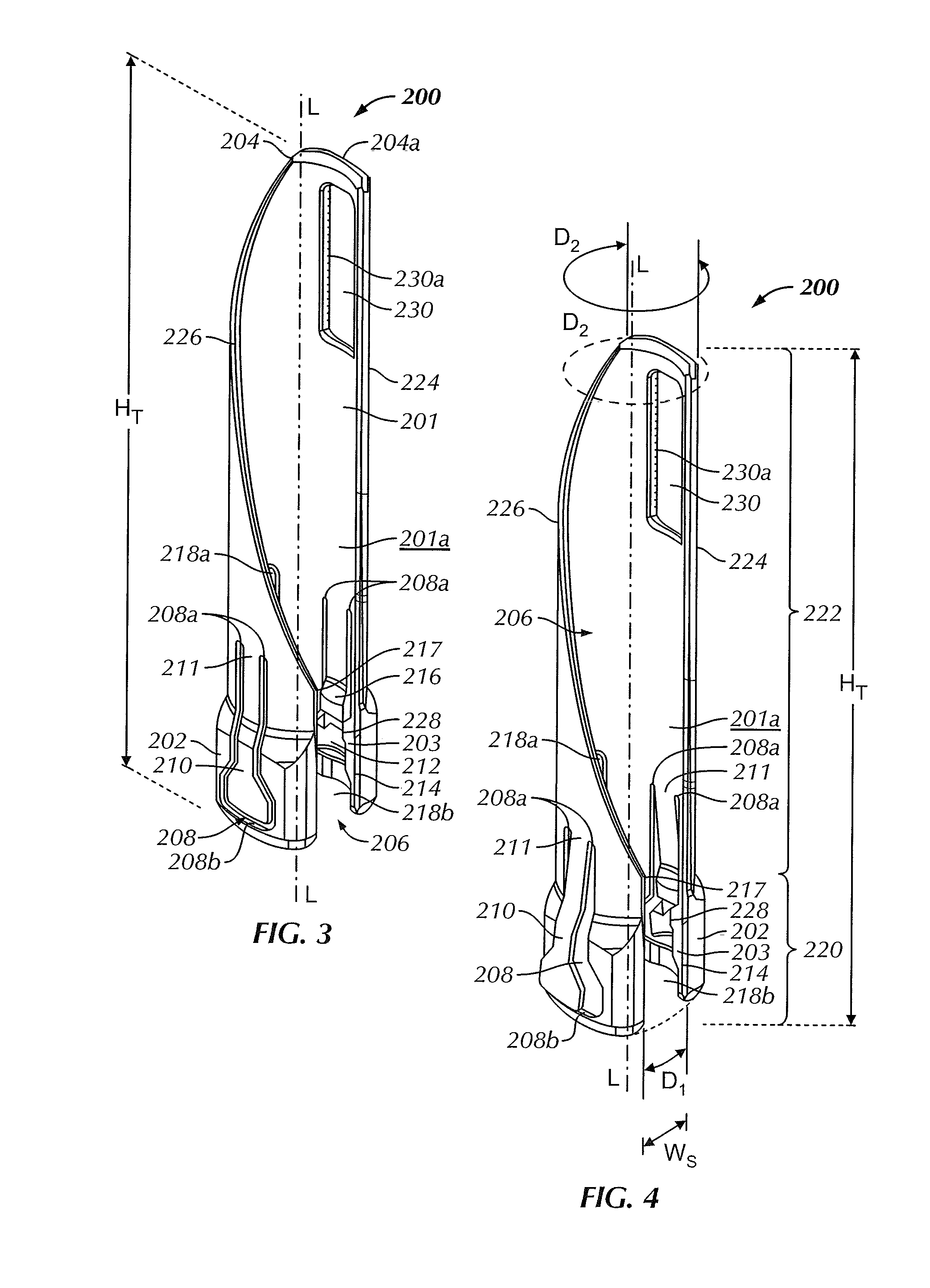Minimally invasive instrument set, devices and related methods
a technology of minimally invasive instruments and instruments, applied in the field of minimally invasive instruments and devices, can solve the problems of large incisions, disruption or resection of significant soft tissue, long recovery time for patients, etc., and achieve the maximum line-of-sight potential of the surgeon, improve the fluoroscopic visualization of screws and rods, and facilitate the effect of screw fixing
- Summary
- Abstract
- Description
- Claims
- Application Information
AI Technical Summary
Benefits of technology
Problems solved by technology
Method used
Image
Examples
Embodiment Construction
[0040]Certain terminology is used in the following description for convenience only and is not limiting. The words “right,”“left,”“lower,” and “upper” designate directions in the drawings to which reference is made. The words “inwardly” or “distally” and “outwardly” or “proximally” refer to directions toward and away from, respectively, the geometric center or orientation of the exemplary instrument set and related parts thereof. The words, “anterior,”“posterior,”“superior,”“inferior,”“lateral,”“medial,” and related words and / or phrases designate exemplary positions and orientations in the human body to which reference is made and are not meant to be limiting. The terminology includes the above-listed words, derivatives thereof and words of similar import.
[0041]FIGS. 1, 2 and 11 show an exemplary bone anchor assembly, polyaxial bone screw or polyaxial pedicle screw 100 for use with an exemplary instrument set for minimally invasive spine surgery includes a body 102, a locking cap or...
PUM
 Login to View More
Login to View More Abstract
Description
Claims
Application Information
 Login to View More
Login to View More - R&D
- Intellectual Property
- Life Sciences
- Materials
- Tech Scout
- Unparalleled Data Quality
- Higher Quality Content
- 60% Fewer Hallucinations
Browse by: Latest US Patents, China's latest patents, Technical Efficacy Thesaurus, Application Domain, Technology Topic, Popular Technical Reports.
© 2025 PatSnap. All rights reserved.Legal|Privacy policy|Modern Slavery Act Transparency Statement|Sitemap|About US| Contact US: help@patsnap.com



